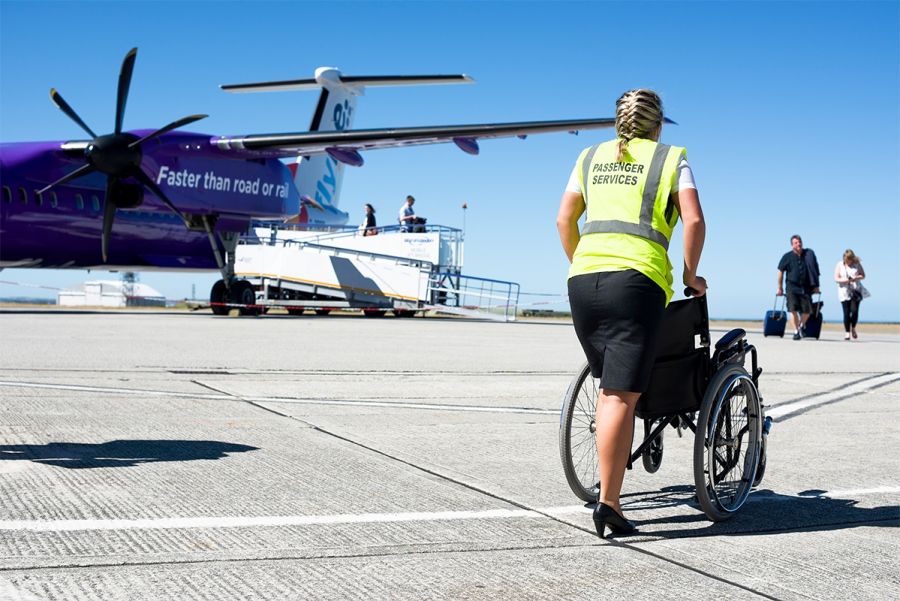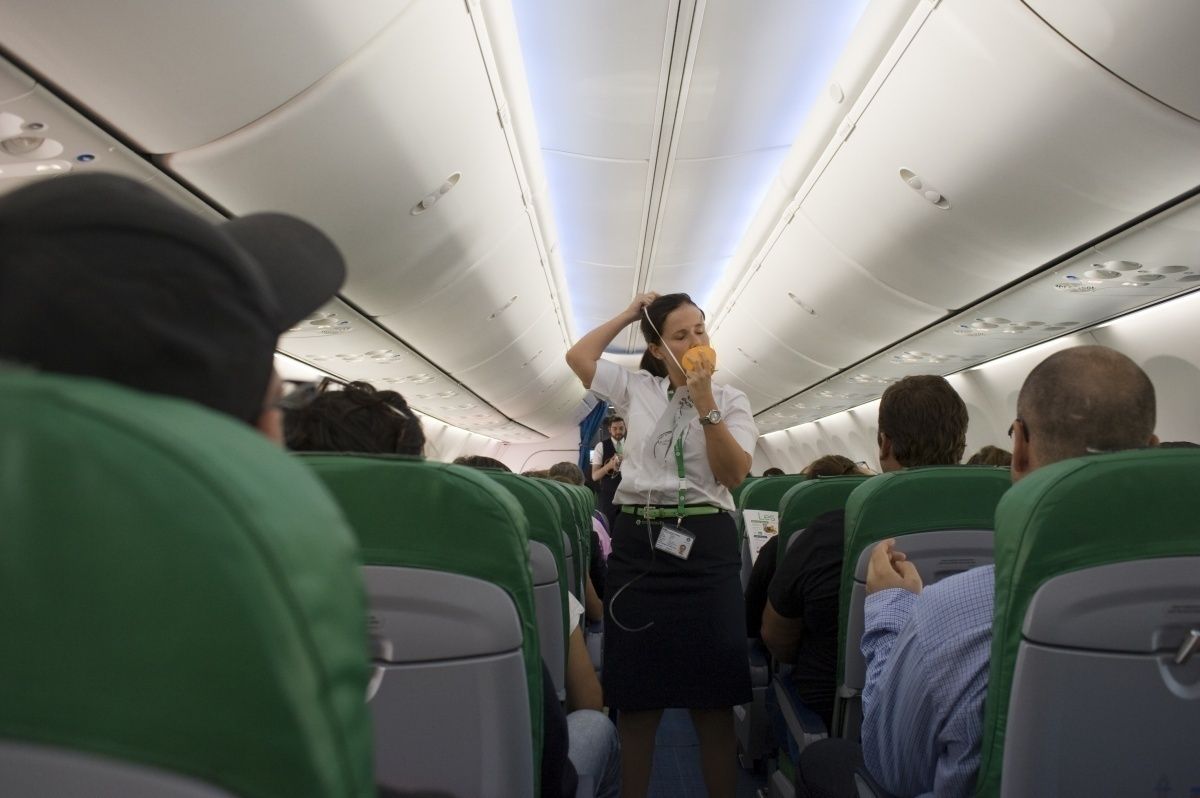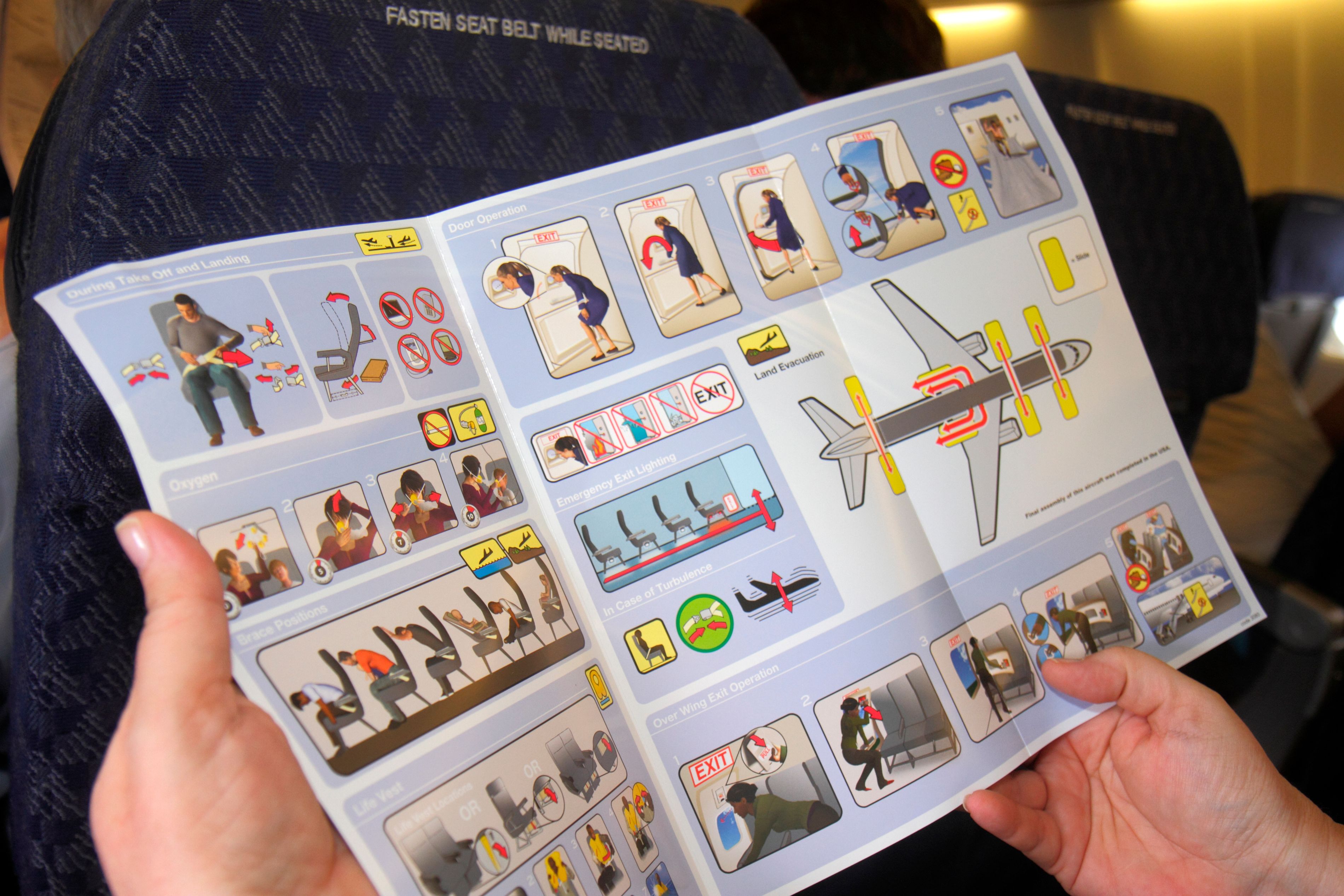Cabin crew are trained to assist hearing and visually impaired passengers during a flight, especially for safety reasons. These passengers normally board first with assistance from the ground crew and are taken directly to their seat. Cabin crew also help to stow their luggage in the overhead lockers.
The legal side of things
Airlines ask to be informed of special assistance requirements when booking a flight, as the aviation authorities' legislation limits the number of passengers with reduced mobility or impairments for safety reasons e.g. in case of an emergency evacuation. Also, the airlines recommend that these passengers travel with a companion for guidance and communication. Due to legalities, such passengers cannot sit on exit rows where safety might be impeded, and they will be designated specific seats.
Personal safety briefing
The passenger will be given a personal safety briefing by a cabin crew member before the rest of the flight boards to ensure their understanding of what to do in an emergency. This will include how to use the seatbelt, the life jacket and where it is stowed, how to use the drop-down oxygen mask, and where the nearest emergency exit is. Also, they will be shown where the restroom is and how to use the call bell. This gives the passenger a chance to have a hands-on feel and touch of the safety equipment, in case of an emergency.
Other considerations
There will be assistance with the meal service where the cabin crew can unwrap food items, give a description or identify where foods are placed on a tray, using a 'clock' description. For example, a cup might be placed at 10 o'clock.
For a passenger with a hearing impairment, crew can communicate by phone messaging or by written note, and understand the need to speak clearly so that lip-reading is possible The safety demonstration is also screened with subtitles as is most of the inflight entertainment. Some cabin crew have knowledge of sign language and may be assigned on those flights.
A passenger with a visual impairment will be shown a braille safety card as well as having the personal demonstration prior to the flight. The inflight entertainment system has audio content and audiobooks to choose from. Service dogs are allowed onboard free of charge and will be given a spare seat next to the passenger for no additional fee.
Passengers with impairments may also bring extra equipment with them onboard to make their flight more comfortable. These can be for physical aid or just for comfort. The only rule is that the device fits within the seat area and the seatbelt can still be fastened. If the passenger has any other type of necessary aid, such as a walking stick, these will be placed in the overhead locker for take-off and landing in order not to impede other passengers in the event of an evacuation. Should an emergency evacuation take place, both types of passenger will be escorted by a crew member to the exit and slide - safety is always the priority.



